80 Top Website Usability Survey Questions to Improve User Experience
Suppose an eCommerce brand noticed a puzzling trend: traffic was up, but conversions weren’t.
They dig into behavioral analytics and find clues: cluttered navigation, a buried “Add to Cart” button, and sluggish product filters. On the surface, these are usability issues that quietly shape how visitors interact with the site.
Would they stop there? A complacent team might. But one that truly wants to understand why users struggle would turn to surveys and hear directly from visitors themselves.
Real user feedback reveals where people get stuck and what changes would make the experience smoother and more engaging.
Every visitor comes to a website with a purpose: to explore, purchase, learn, or connect. How easily they achieve that goal defines their experience and, ultimately, your success.
In this guide, you’ll find 80 usability survey questions to help you uncover friction points, understand user intent, and continuously improve how people interact with your website.

What is a website usability survey?
A website usability survey measures how real users experience a website: how easily they can navigate, find information, and complete tasks. It evaluates practical aspects like layout, content clarity, loading speed, mobile experience, and overall ease of use.
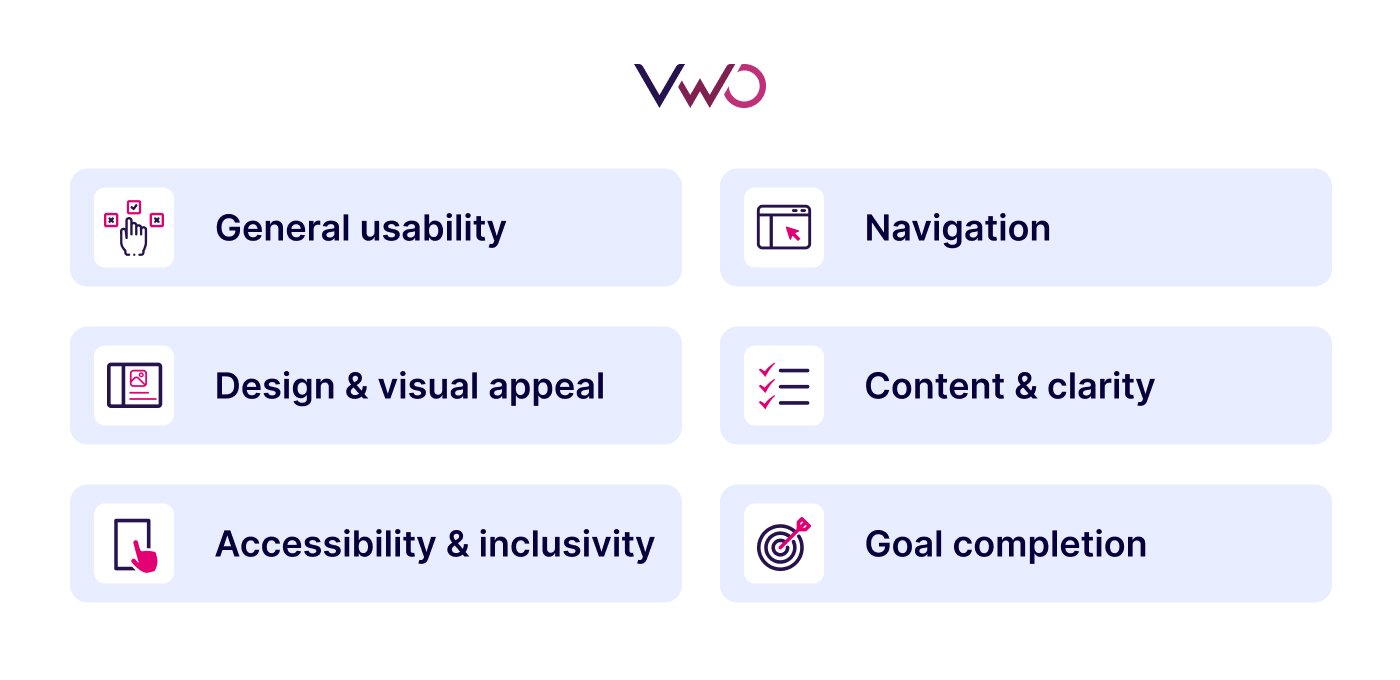
These online surveys often complement usability testing, allowing teams to capture both behavioral insights and user perceptions in one research cycle. Are pages intuitive? Is the design responsive? Does the checkout or form process feel effortless?
The answers to such questions provide actionable insights into how visitors perceive and interact with the website, helping businesses refine design, simplify navigation, and deliver a smoother, conversion-friendly experience.
Key reasons to conduct website usability surveys

1. Understand real user behavior
Analytics can tell you what users did, but not why they did it. A website usability survey captures the human side of behavior: what users found confusing, frustrating, or delightful, helping you see your website through their eyes.
2. Identify friction points early
Visitors often encounter obstacles that go unnoticed in internal testing. Surveys reveal pain points like unclear CTAs, broken navigation, or slow pages, so you can fix them before they impact conversions or brand trust.
3. Validate design and ux decisions
When launching a redesign or new feature, usability feedback confirms whether your changes actually improved the experience. Real visitor input helps you align design choices with actual user expectations.
4. Improve conversion and retention rates
By addressing usability gaps, you reduce bounce rates, increase task completion, and create smoother user journeys, leading to higher conversions and repeat visits.
5. Benchmark and track improvements
Running regular surveys on website usability allows you to compare results over time. You can measure progress, spot recurring issues, and quantify how design updates impact user satisfaction.
6. Build customer trust and engagement
Inviting visitors to share their feedback signals that you value their opinions. It builds goodwill, strengthens relationships, and turns users into active participants in improving your digital experience.
80 Important website usability survey questions to ask
The right questions uncover usability gaps, design weaknesses, and missed opportunities to enhance navigation, engagement, and overall satisfaction.
Here’s a structured set of website usability survey questions you can tailor to your goals and audience. Select a balanced mix from each category to gather feedback across different usability aspects, covering everything from layout and clarity to performance and emotional satisfaction.
General usability & overall experience
These general website usability survey questions help you gauge how visitors perceive the website as a whole: its ease of use, intuitiveness, and overall satisfaction.
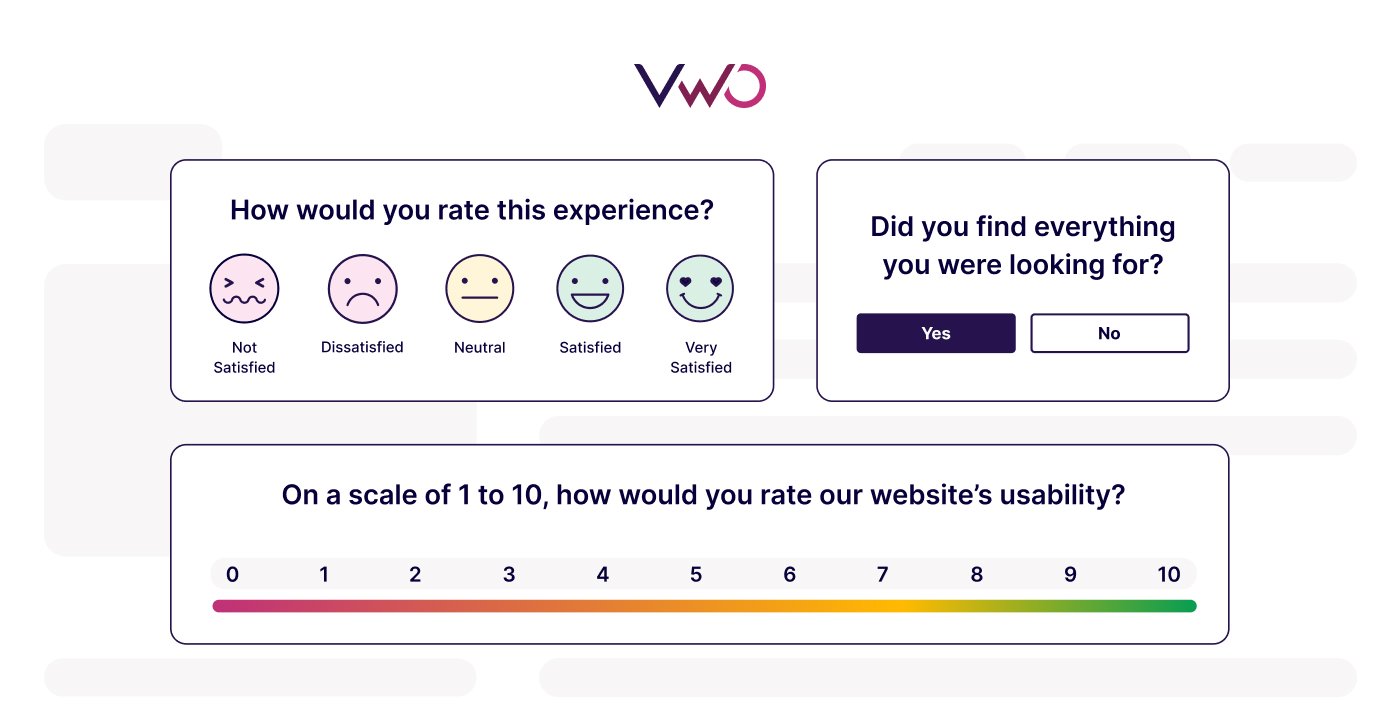
- How easy is it to use our website overall?
- How would you describe your overall experience today?
- How intuitive did the website feel during your visit?
- Did you find everything you were looking for?
- How quickly were you able to complete your main task?
- What’s the one thing you liked most about your experience?
- What’s the one thing you would change or improve?
- On a scale of 1–10, how would you rate our website’s usability?
- How likely are you to return to our website in the future?
- How confident do you feel when using our website?
Navigation & information flow
These questions help identify whether users can move smoothly through the site and locate information effortlessly.
- How easy was it to find the information you needed?
- Did you ever feel lost or unsure about where to go next?
- Were the navigation menus clear and well-organized?
- Did you use the search function? If yes, how helpful was it?
- Were the categories or sections logically structured?
- Did internal links help you move between pages smoothly?
- Was it easy to return to the homepage or previous pages?
- How easy was it to discover key pages (e.g., pricing, contact, products)?
- Did you notice any broken or misleading links?
- How would you rate your overall ease of navigation on this site?
Before you move on to the next question, here’s something worth a listen. UX expert Nick Cawthon breaks down real examples of usability insights that reshaped entire user journeys.
Design & visual appeal
Design affects usability as much as aesthetics. This section explores how layout, typography, and responsiveness influence experience.
- How visually appealing did you find our website?
- Did the layout feel clean and easy to understand?
- Was the font size and text contrast comfortable to read?
- Did images and visuals enhance your understanding of the content?
- Did the color scheme feel pleasant and consistent?
- Did important information (e.g., CTAs) stand out clearly?
- Was the overall design consistent across pages?
- Did the website design work well on your device?
- How would you describe your first impression of our design?
- Did any visual elements distract you from your main goal?
Content & clarity
Evaluate how well your content communicates information and supports decision-making.
- Was the content clear and easy to understand?
- Did you come across any confusing or overly technical language?
- How useful was the information provided on this page?
- Did the content answer your key questions or concerns?
- Was there any information you expected but couldn’t find?
- How engaging did you find the written content?
- Did the tone of the content feel appropriate and trustworthy?
- Were the CTAs (call-to-action buttons) clear and relevant?
- Did you find any spelling or grammatical errors?
- How well did visuals (images, icons, infographics) support the text content?
Performance & functionality
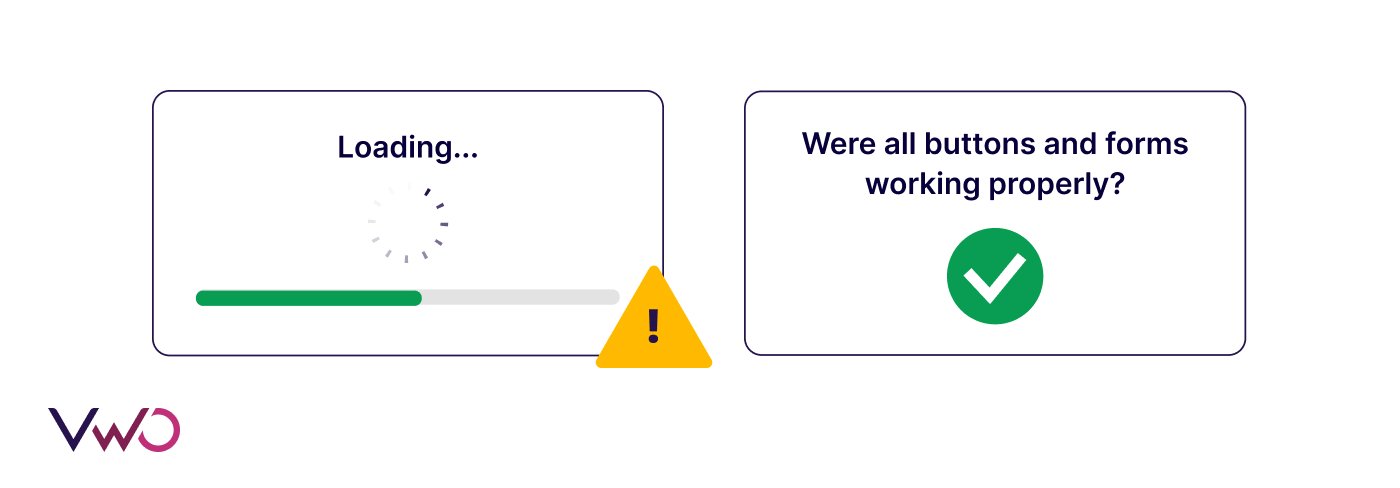
These performance usability survey questions help identify technical or operational issues that impact the browsing experience.
- Did the website load quickly for you?
- Did you encounter any broken links or error messages?
- Were all buttons and forms working properly?
- Did any elements fail to load or display incorrectly?
- How responsive was the site when scrolling or clicking?
- Did the website perform well on your device or browser?
- Did videos or interactive content work as expected?
- Did you notice any lag or delays while using the site?
- How satisfied are you with the website’s speed and stability?
- Were there any technical issues that interrupted your experience?
Payment & Checkout
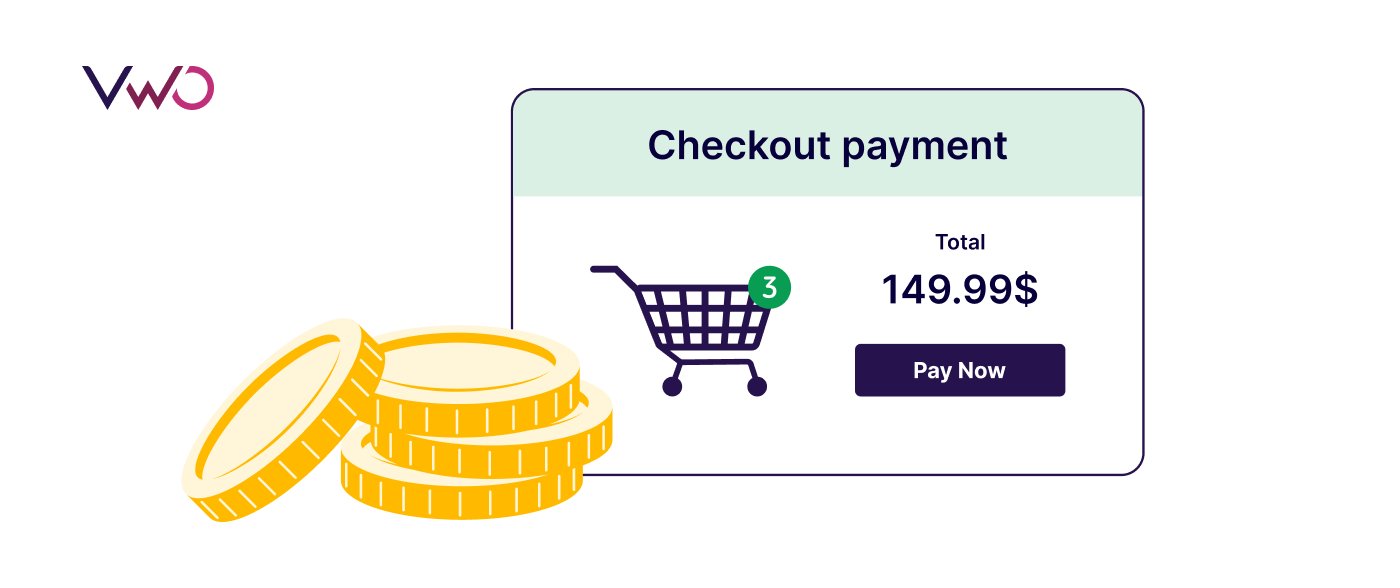
Evaluate how smooth, secure, and user-friendly your website’s checkout and payment process feels to visitors.
- How easy was it to complete your payment on our website?
- Did you face any issues while entering your payment details?
- Were all payment options (credit/debit cards, wallets, UPI, etc.) clearly visible and easy to use?
- How satisfied are you with the available payment methods?
- Did the website make you feel secure while entering your payment information?
- How clear and understandable were the payment-related instructions or messages?
- Did the page load quickly and process your payment without delays or errors?
- Did you encounter any problems with coupon codes, discounts, or promo applications?
- What, if anything, stopped you from completing your payment today?
- How likely are you to use this payment process again for future purchases?
Accessibility & inclusivity
Ensure your website works well for users of all abilities and preferences.
- Was the text easy to read in terms of size and contrast?
- Could you navigate the site using only your keyboard or assistive tools?
- Were alternative texts provided for images or videos?
- Did you find captions or transcripts for multimedia content?
- Did any design elements make it hard to read or focus?
- Did you encounter any barriers in accessing key information?
- How inclusive did the overall design feel?
- Did you notice any accessibility issues during your visit?
- Would you describe this website as easy to use for everyone?
- How could we make our website more accessible for you?
Goal completion & satisfaction
Understand how effectively the website supports users in achieving their intended goals.
- Were you able to complete the task you came here for?
- How easy was it to achieve your goal on this website?
- What prevented you from completing your task, if anything?
- How satisfied are you with the outcome of your visit?
- Did you face any confusion during checkout or form submission?
- Was it easy to locate and understand the next step (e.g., sign up, buy, contact)?
- How confident do you feel in the results or information you found?
- How likely are you to recommend this website to others?
- How well did our website meet your expectations today?
- What could we do to make your next visit even better?
How to run a website usability survey in 7 steps
Define clear objectives
- Identify what you want to learn, for example, “Why do users drop off during checkout?” or “Do new visitors understand our product flow?”
- Decide whether your goal is to gather quantitative data (metrics and ratings) or qualitative feedback (opinions and reasons).
- When you know what success looks like, you can frame sharper questions and collect insights you can actually use for your target audience.
Select your survey method and platform
- You can deploy on-site surveys that appear on specific pages, send email surveys to existing customers, or run exit-intent pop-ups for visitors about to leave.
- Pick a reliable platform, such as VWO or Survicate, to design, distribute, and analyze responses easily.
- Match your survey type to your purpose: a post-purchase survey works best for customer satisfaction, while an on-page survey can reveal navigation or design issues.
Write focused, neutral questions
- Mix closed-ended questions (like multiple choice or rating scales) with open-ended ones that invite detailed feedback.
- Keep your language clear and unbiased; ask “How would you describe your experience?” instead of “Did you find our website easy to use?”
- Limit your survey to 8–10 questions to prevent fatigue, and do a quick internal test to ensure the flow and instructions are intuitive.
Recruit the right participants
Your results are only as good as your respondents.
- Define who should take your survey: new visitors, repeat users, customers, or first-time trial sign-ups.
- You can invite users directly on your website, reach out via email, or use pre-screened participant panels.
- Offering small incentives (like discount codes or gift cards) often helps improve participation and response quality.
Launch and monitor the survey
- Deploy your survey where it will capture the most relevant feedback: on high-traffic pages, after task completion, or during drop-off points.
- Timing matters: avoid showing surveys too early or too frequently.
- Keep it short, user-friendly, and visually consistent with your site design to maintain credibility and encourage completion.
Analyze responses for actionable insights
- Once responses start coming in, organize them by themes such as navigation, content clarity, or technical performance.
- Quantify recurring patterns, for instance, if 40% mention “confusing checkout,” that’s a clear optimization priority.
- Combine quantitative and qualitative data to validate trends.
- Then, prioritize issues using frameworks like RICE (Reach, Impact, Confidence, Effort) or similar methods to focus your team’s next actions.
Implement, test, and iterate
Usability surveys aren’t a one-off project; they’re a continuous improvement loop.
- Turn your findings into design or UX updates, test them through A/B experiments, or combine them with usability testing to validate improvements.
- Track key metrics like task completion rate, time on task, or satisfaction score to measure long-term improvement.
Simply describe your experiment in plain English, and VWO Copilot does the rest. It instantly builds your test from start to finish by creating variations, setting up metrics, and defining audience segments so you can launch experiments with a single click.
How can VWO help you run better website usability surveys?
VWO helps businesses turn assumptions into insights by gathering real-time user feedback directly on their websites. Its on-page surveys reveal what users think, why they hesitate, and where they face friction.
AI-powered survey creation
VWO Copilot, your AI-powered assistant, helps you build the right questions in seconds. Just enter your survey goal, such as understanding customer pain points or collecting product feedback, and the AI will generate relevant questions for you. Choose from preset goals or add your own. If the questions don’t fit, regenerate until you get the perfect survey.
Targeted, contextual feedback
With intelligent survey triggers such as time on page, scroll depth, or exit intent, VWO captures feedback at the most relevant moments — when users are actively engaging or about to leave. Conditional branching makes surveys dynamic, showing follow-up questions based on user responses for richer, more personalized insights.
Seamless customization and reach
Use custom designs or pre-built usability survey templates to customize themes, colors, and formats, or create multilingual surveys to connect with global users. Whether it’s a quick one-question poll or a detailed usability study, every survey feels like a natural part of your website experience.
Deeper insights through behavior analysis
Watch session recordings of survey respondents to see how they navigated your site, where they clicked, or where they dropped off. These visual insights help validate feedback and uncover hidden usability issues that text responses alone might miss.
AI-summarized survey reports
With VWO Copilot AI, analyzing survey responses becomes faster and smarter. It summarizes qualitative feedback, detects recurring themes, and suggests practical improvements.
Combined with advanced filtering options, such as device type, traffic source, campaign parameters, or page URL, teams can pinpoint patterns, identify high-impact issues, and prioritize changes with confidence.
VWO doesn’t stop at insights; it helps you act on them. Through its integration with VWO Testing and VWO Personalize, you can instantly turn usability feedback into live experiments or tailored user experiences.
Worship Digital used VWO’s on-page surveys, scrollmaps, and user testing to uncover key usability and messaging gaps and boost CORGI HomePlan’s conversions by 30.9%, all by clearly communicating its no-hidden-fee promise. Read the full story here.
Request a free demo and experience how VWO transforms feedback into growth.
FAQs
A website usability survey reveals how easy or difficult it is for visitors to use your site. It highlights usability issues, such as poor navigation, unclear messaging, or slow performance, and helps you prioritize improvements that make the experience more intuitive and conversion-friendly.
Include a mix of quantitative (rating scales, multiple choice) and qualitative (open-ended) questions. Focus on areas like navigation ease, design clarity, content usefulness, task completion, and overall satisfaction to capture both measurable data and deeper insights.
Keep it short and focused, ideally 8 to 10 questions. Longer surveys reduce completion rates, while concise ones encourage quality responses and minimize user fatigue.
Combine usability surveys with behavior analytics tools like session recordings, heatmaps, and A/B testing. This approach reveals both what users do and why they do it, helping you validate design decisions and continuously optimize your website experience.

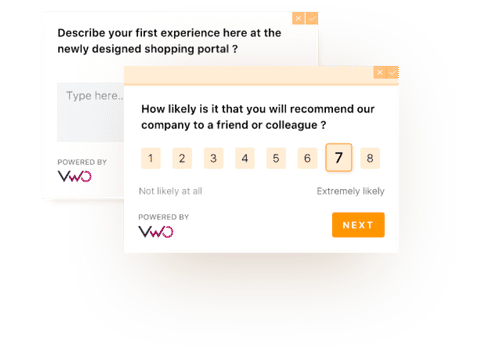

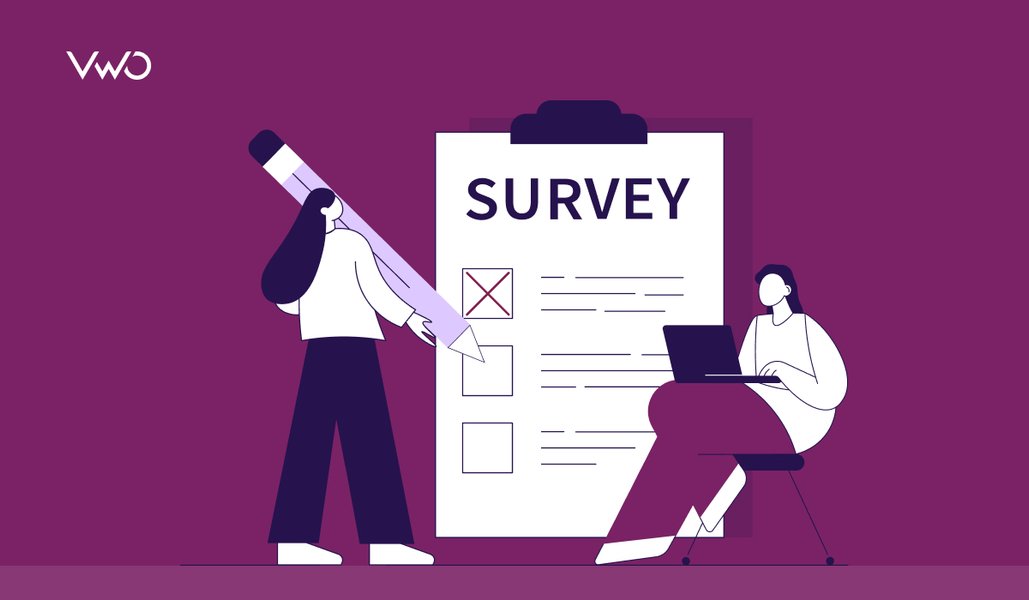

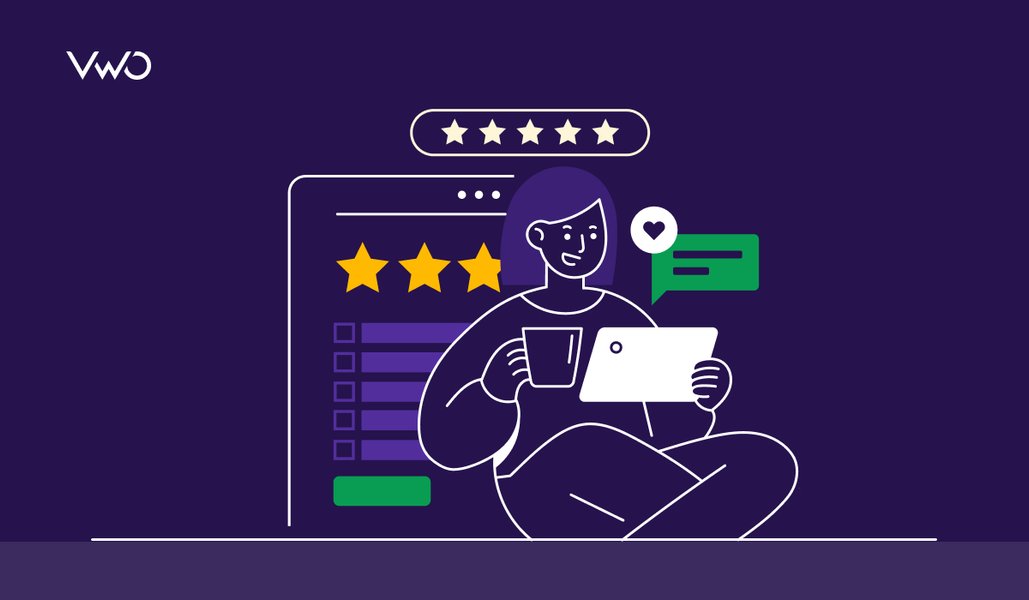
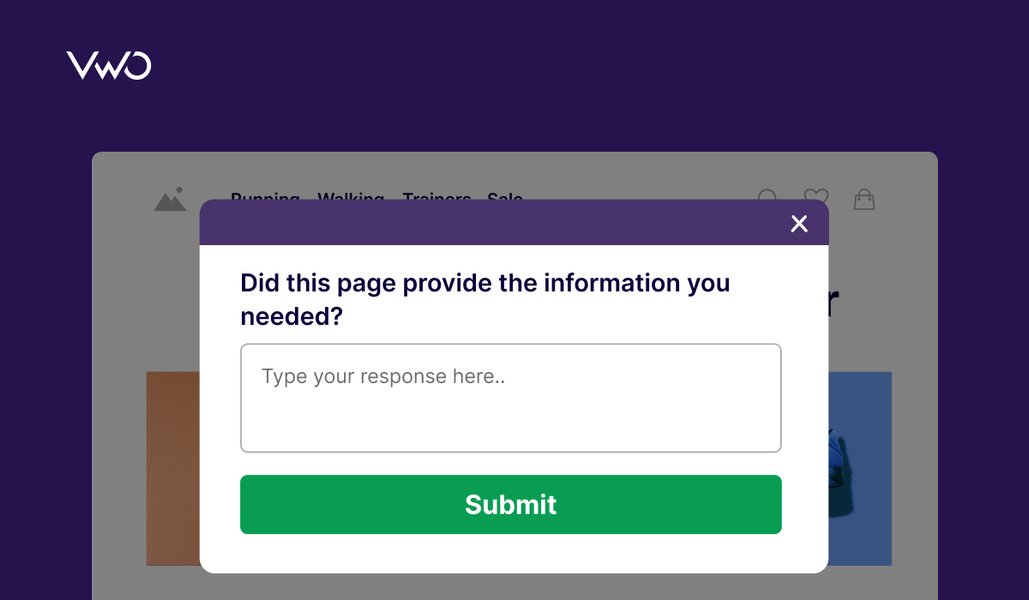

![What Is Net Promoter Score (NPS)? How to Measure and Use It [Complete Guide]](https://static.wingify.com/gcp/uploads/sites/3/2025/11/Feature-image-What-Is-Net-Promoter-Score-NPS_-How-to-Measure-and-Use-It-Complete-Guide-1.jpg?tr=h-600)













